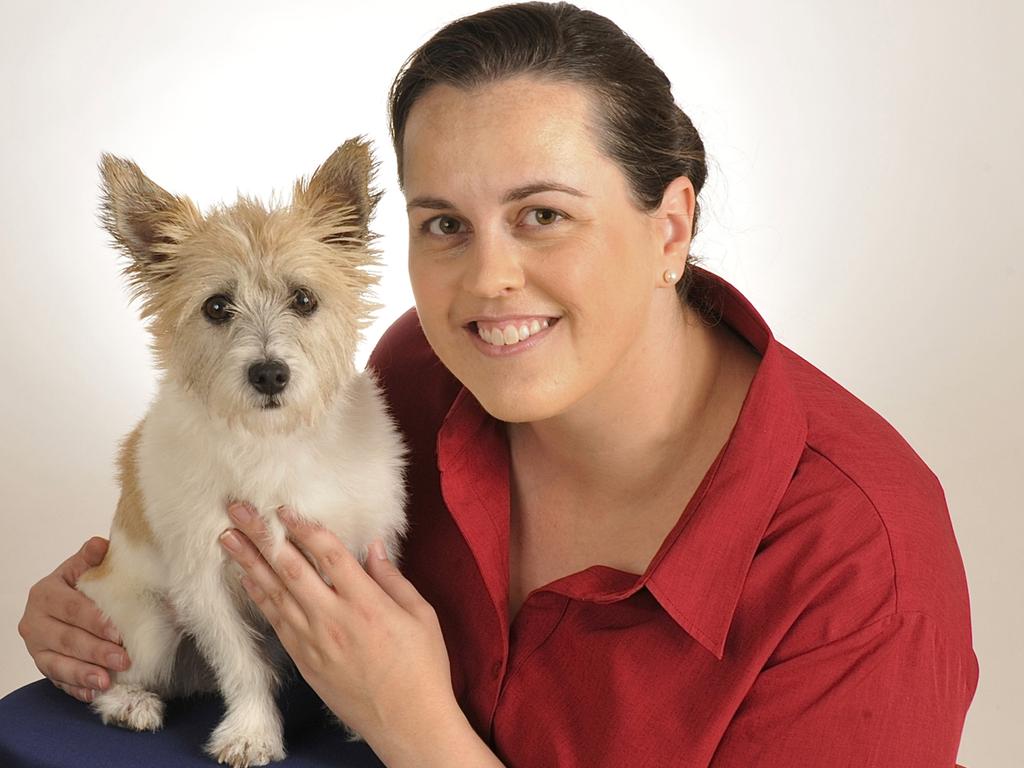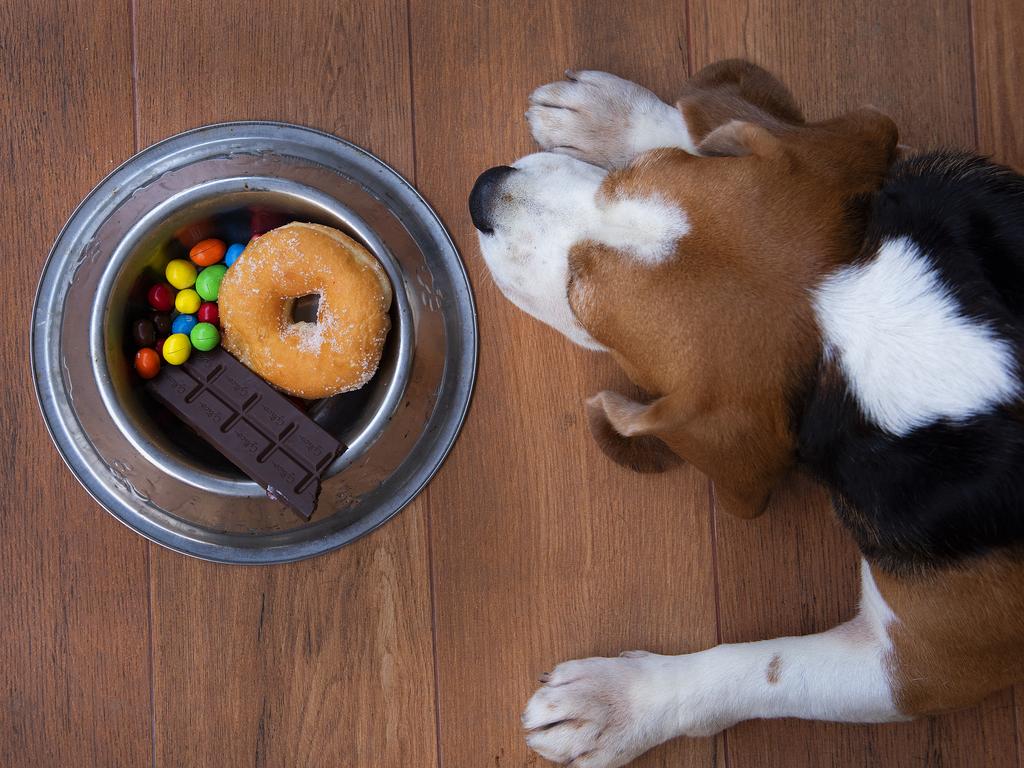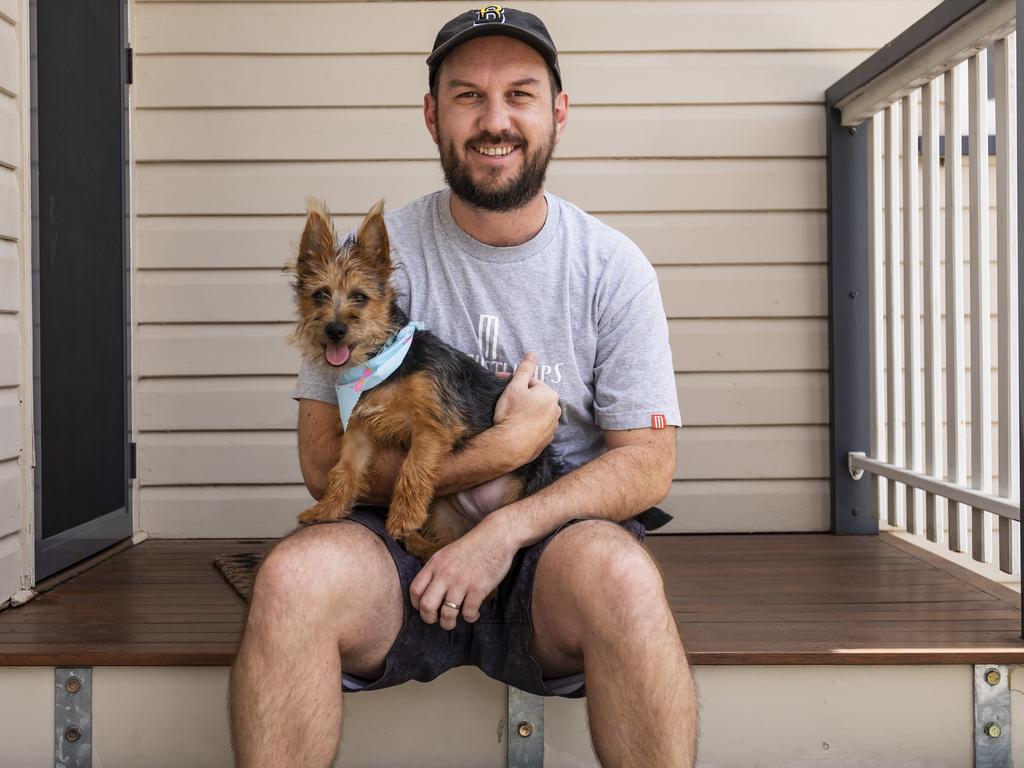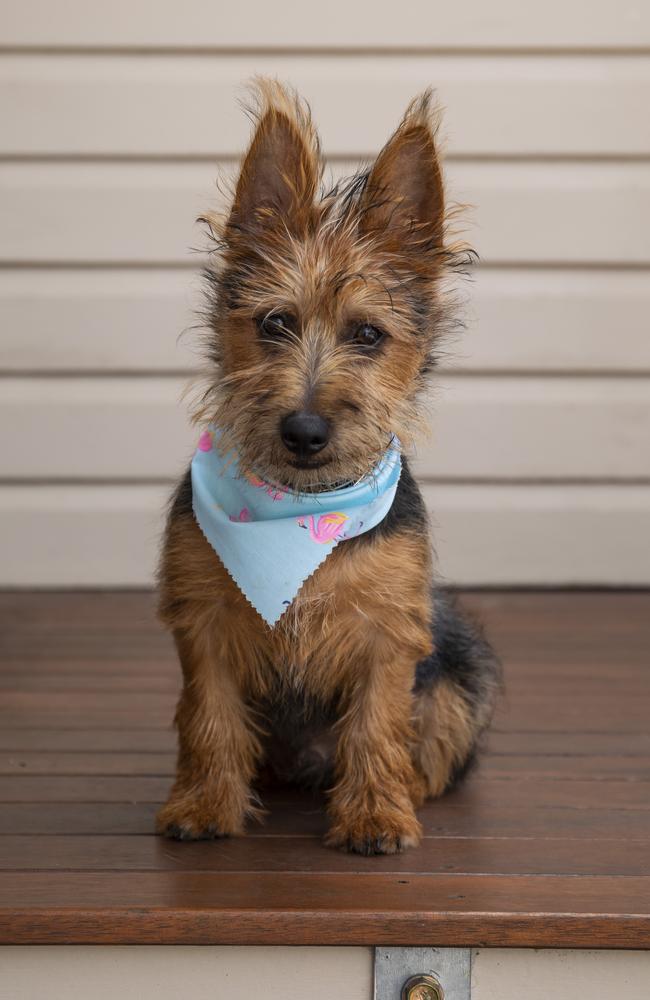‘It saved his life’: The hotline to call when your pet gets sick
Christmas is the most dangerous time of year for pets to be accidentally poisoned. Why a free poisoning advice hotline should be on speed dial for all pet owners.
QWeekend
Don't miss out on the headlines from QWeekend. Followed categories will be added to My News.
From all corners of the country they call with an astonishing assortment of concerns: my dog has licked a cane toad; the cat swallowed tinsel; my donkeys grazed in a paddock of poisonous plants; the red panda has had too much flea treatment. Help!
Panicked pet owners might call their veterinarian. Or turn to Google. But in thousands of cases – an estimated 7500 a year – they call a human poisons hotline. Now, pets have their own line with the establishment of the Australian Animal Poisons Helpline, a registered charity providing free animal poisons advice that expects to take 8000 calls in its first year.
The national service was founded by specialist veterinarian in emergency and critical care Dr Rachel Peacock and two Perth-based pharmacists – Kasra Ahmadi and Nick Merwood, who both have extensive experience working in human poisons advice.

Peacock, 40, who estimates she has treated tens of thousands of poisoned animals in emergency presentations, says the service aimed to “revolutionise” the management of poisoned animals and reduce morbidity and mortality rates.
The charity will promote animal poisoning prevention and increase public awareness, identify and report poisoning trends and participate in animal toxicology research.
“In the UK and US, animal poison information services are a lot more ingrained in pet owners’ knowledge because they have been around for decades,” Peacock says. “We believe the demand for this service in Australia could be as high as 80,000 pets per year.”
Ahmadi and Merwood decided to start a dedicated pet poisons hotline after taking many calls from pet owners but were generally not able to offer advice.
When Ahmadi’s own dog was accidentally poisoned while he was on holiday, he was shocked to learn veterinarians did not have access to a poisons information service or other resources to help animals.
Ahmadi and Merwood teamed up to start a pet-dedicated service but needed an experienced veterinarian to join them. They found Peacock on LinkedIn and she readily agreed to be part of it.

“As a veterinarian, I receive calls from pet owners every day about poisons and know how challenging it can be to find reliable information,” says Peacock, who is based in Melbourne.
“I had previously considered starting such a service myself so I was immediately interested. I didn’t know Nick or Kasra at all but it was a natural leap for me.”
Brock Taylor credits the Animal Poisons Helpline with saving his puppy’s life.
Taylor, 32, of Acacia Ridge, in Brisbane’s south, rang the helpline in September after his then three-month-old Australian terrier puppy, Stringer, ingested anti-inflammatory Voltaren tablets.
Taylor, a state government media adviser, was home alone with Stringer when the emergency unfolded and was grateful for the reliable and free advice he received from the helpline.

“It was a Saturday morning and we (with wife Emily, 31) had only had Stringer for about a month,” he says.
“Emily went to pilates but I stayed in bed and fell back asleep and I woke up to a crunching sound beside me.
“The night before I had played squash and I was really sore so I took some Voltaren tablets and left the blister pack on the bedside table. But in the morning Stringer jumped up and got it and started chewing.”
With half a tablet on the floor, Taylor realised the then 2kg Stringer had ingested one and a half of the tablets. He remembered an information pack the dog’s breeder had given them that contained information about the animal poison helpline.
Based on Stringer’s small size, the helpline operator recommended he be immediately taken to a vet where Stringer’s stomach was pumped. He spent two days in hospital on a drip and undergoing tests for kidney damage.
Fortunately, he made a full recovery.

“The helpline operator was super helpful,” Taylor says.
“They did the math on what the Voltaren tablet contained and worked out how many tablets he would need to be in danger. They told me to take him to the vet straight away which I did. It was pretty serious.
“If not for the hotline, I think I would have waited a bit longer just to see if any symptoms developed and then taken him to the vet. I’ve never owned a pet before so it’s all new to me.
“But I’ve learned that could have been much more serious because the drug would have had more time to absorb into his system. I really do believe that advice played a big part in saving his life. It could have been a lot worse.”
Taylor says Stringer, named after a character in HBO series The Wire, has changed his and Emily’s lives.
“Stringer is now one of the most important things in our lives. To think that we might not have had our little fellow around is quite upsetting,” he says.
“When things are happening in the moment, like on that morning, you don’t want to have to think of the cost of ringing for advice. You just want the information and to keep your dog alive.
“To be able to call them straight away and then for us to convey that information to our vet was just invaluable.”
The real Jeannette Young: What you didn’t know about the State’s CHO
‘I blamed myself’: Robin Bailey’s most candid interview yet
The Australian Animal Poisons Helpline, that began almost a year ago, costs an estimated $450,000 to run per year. It has no government funding and operates with corporate sponsors within the veterinary and pet retail industries.
It is available daily from 9am to 8pm AEST with an aim to eventually offer a free 24-hour service. And it is also open to callers from New Zealand.
Peacock wants to raise awareness of the service in the lead up to the busy Christmas period.
“Christmas is a very common time for pet poisonings,” she says.
“People are home, they are eating, they are sharing, there are visitors who might not be used to having pets around. Medications might be left in bags on the floor, there are wrapped lollies, tidbits of food may be given out under the table.
“At any time, we get a lot of calls about rat bait, chocolate, cats getting flea treatments that are meant for dogs, well-intentioned pet owners who might try to give human pain relief medication to their pets, especially if their vet is closed on the weekend.
“We do get quite a number of calls from Queensland about cane toads with questions like, ‘My dog has licked a cane toad and is drooling from his mouth, what do I do?’” (Peacock says to use a wet cloth to wipe the slime from inside the mouth).
But it’s not just cats and dogs. Calls are received about all creatures great and small – birds, lizards, snakes, goats, cows, horses, donkeys and, yes, red pandas.
“One of the most interesting cases was about a red panda from a zoo,” Peacock says.
“It had accidentally been given an incorrect higher dose of its flea medication. To decontaminate the panda, it needs to have a bath but the panda won’t allow you to simply bathe it, it would have to be anaesthetised to do so.
“So its keepers were hoping to avoid that stress if possible.
We did a risk assessment based on the literature that was available on pandas and we determined for them that we didn’t think it would be problematic. It all turned out fine but I don’t think the panda had any fleas that month.”
There has also been advice given to a woman from Wamuran, in the Moreton Bay region north of Brisbane, about her 15 donkeys that had been grazing in a paddock containing the poisonous flowering plant Crotalaria spp.
Then there was Shortcake the cat, from Ferny Hills, which knocked the contents of a wick diffuser over herself and possibly licked some of it.
There was Honey, the cavoodle, from Hamilton, which bit into a nasal spray containing a corticosteroid; Basil, a crossbreed dog, from Ipswich, found with a block of rat bait in his mouth with about a quarter of it missing; and Manny, the staffy, from Bald Hills, which ingested a packet of cold and flu tablets.
There have been other cases of dogs ingesting a variety of weird and wonderful items including dirty nappies, a lead pipe, mercury thermometers, cement, landscaping glue, lipstick and entire kebab skewers (meat and stick).

Peacock estimates that the phone assistance given can eliminate the need to visit a veterinarian in person in about 70 per cent of cases.
“I’ve worked in emergency for a long time and when you see a delayed presentation for poisoning, it’s often because the owners didn’t seek advice soon enough because they were concerned about the cost involved,” she says.
“We didn’t want to create any barriers for people accessing the timely information. In poisoning, time is absolutely of the essence. As soon as an exposure occurs, the clock is ticking.
“Having a free service where owners don’t need to worry about paying anything to get timely advice can help prevent a lot of poisoning from progressing further. That not only saves lives but reduces the cost of treatment for owners.”
Australian Animal Poisons Helpline: 1300 tox pet (1300 869 738); animalpoisons.com.au
POISON DANGERS FOR DOGS AND CATS
Grapes, sultanas, currants and raisins, including those in puddings and mince pies (dogs only) – causes kidney failure
Chocolate – contains caffeine and theobromine that can cause heart arrhythmias, changes in blood pressure, tremors and seizures.Dry cocoa and baking chocolate is particularly toxic.
Xylitol sweetener in baked goods and lollies, chewing gum and toothpaste (dogs only) – low blood sugar and liver damage
Macadamias (dogs) – can cause lameness, joint swelling, pain and weakness
Alcohol – weakness that may progress to coma
Pork crackling, sausages and other fatty foods – stomach upsets and pancreatitis that can be life threatening. Sometimes thefats from trays are poured onto the soil/sand and this can lead to intestinal blockage if eaten
Avocado – contains a compound called persin (worse in unripe fruit) that can cause significant gastrointestinal upset. Ifthe stone is ingested, it can cause a gastrointestinal obstruction
Bread dough – uncooked bread contains yeast that can lead to bloating, abdominal pain, vomiting, drowsiness, unsteadiness,coma and seizures
Onion and garlic – symptoms can range from minor gastrointestinal effects to a potentially serious, life-threatening haemolyticanaemia
Cooked bones – splinter easily and can perforate the gastrointestinal tract
Poinsettia plants – if chewed on, may cause irritation to the mouth leading to drooling and vomiting
Food-based Christmas tree decorations – dogs, in particular, will pull trees down, eat the food decoration often with theribbon loops
Stagnant water and fertilisers used with live Christmas trees – stomach upsets
Tinsel and ribbons – especially tempting for cats – can cause severe intestinal blockages
Batteries – severe erosion to the gastrointestinal tract
Human medications such as headache tablets, antidepressants, pain killers, blood pressure medications, asthma inhalers – especiallyfrom guests who might not be used to having pets – can all be problematic.
Cane toads – licking toads is dangerous. If decontamination is delayed, symptoms can progress to vomiting and diarrhoea, seizures,coma and death.
– Dr Rachel Peacock



